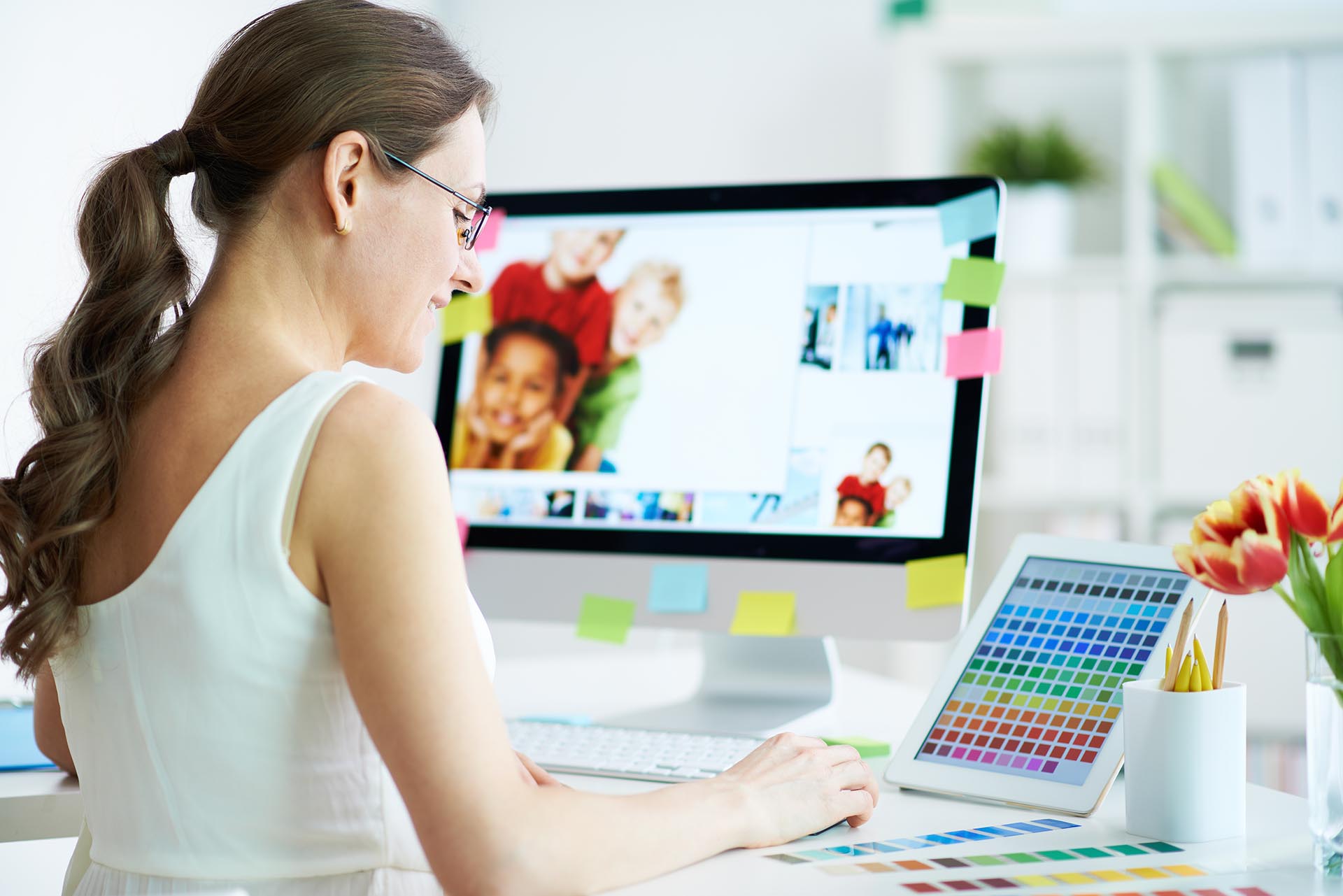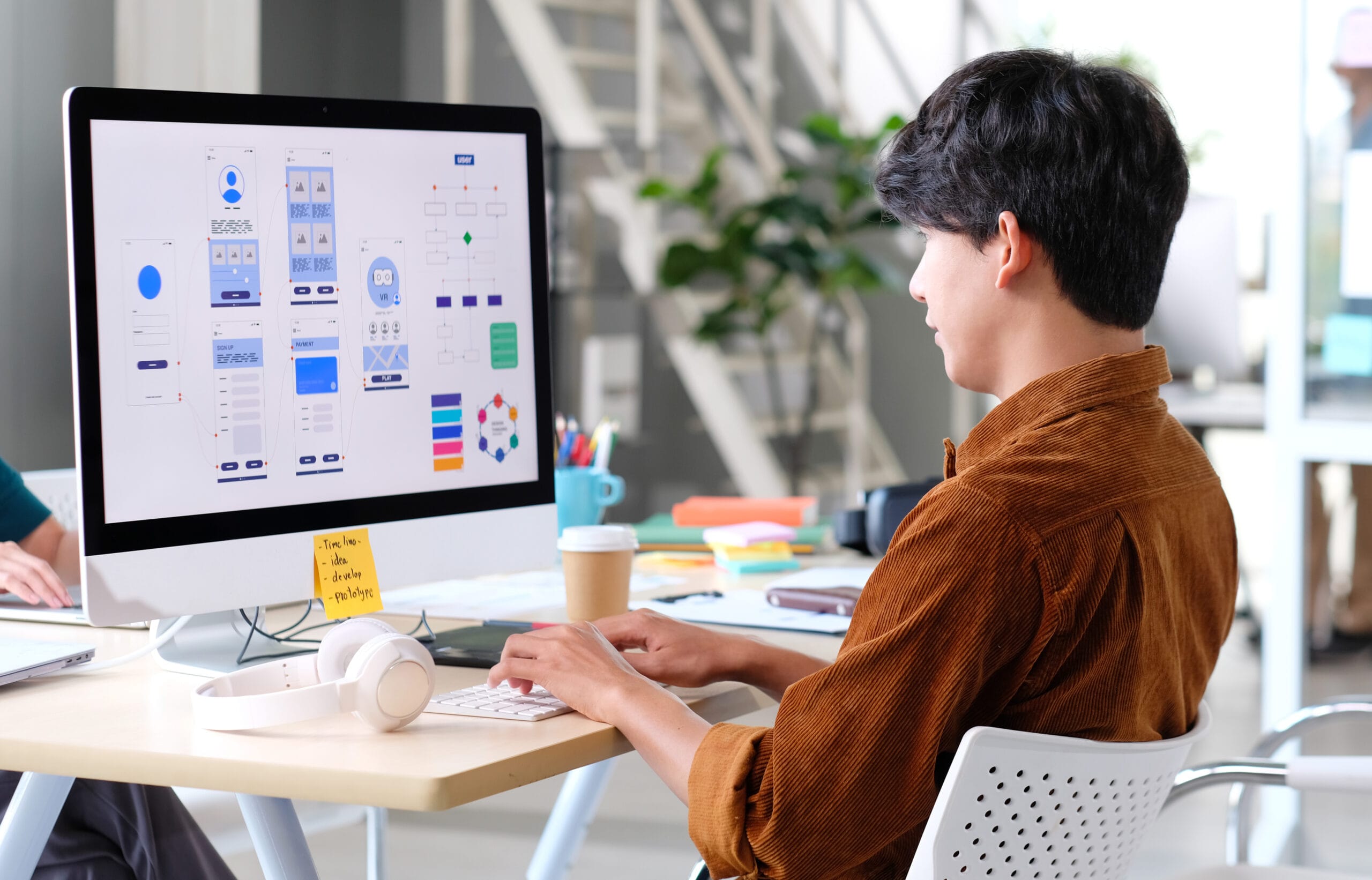Discover why responsive web design is key for modern user experience
Wiki Article
Discovering the Numerous Types of Web Style and Their Special Advantages
The landscape of website design encompasses a range of styles, each offering unique benefits that satisfy different customer needs. Flat and minimalist layouts emphasize clearness, while receptive and worldly layouts improve versatility across devices. Illustrative and typography-driven techniques aim to increase involvement and emotional resonance. Comprehending these varied kinds can substantially impact individual experience and brand name assumption. What lies below the surface area of these style selections?Minimal Website Design

Minimalist Web design commonly includes a minimal shade scheme and straightforward typography, which not only improves appearances but also enhances brand identification. The lowered intricacy can lead to faster packing times, additionally enhancing individual satisfaction. In addition, by decreasing visual mess, individuals can involve with web content a lot more successfully, causing enhanced understanding and retention. Generally, minimal Web layout fosters a smooth user experience, making it a prominent selection for brand names aiming to share quality and professionalism and reliability in their online presence.
Responsive Web Design
Responsive website design has become necessary in today's electronic landscape, making sure mobile compatibility for individuals throughout various devices. This approach substantially enhances individual experience by supplying seamless navigating and availability, no matter of screen size. As even more individuals access the Web on smart devices and tablet computers, the significance of receptive layout proceeds to expand.
Mobile Compatibility Importance
As mobile phone usage proceeds to increase, making certain web sites work with different display dimensions has actually come to be vital for efficient communication and engagement. Mobile compatibility, typically attained through receptive website design, enables internet sites to adjust effortlessly to smart devices, tablets, and various other gadgets. This flexibility not only gets to a more comprehensive audience however likewise enhances brand reliability. A site that functions well on smart phones shows expertise and attention to user requirements. On top of that, search engines focus on mobile-friendly sites in their positions, making compatibility an important aspect for on-line visibility. By buying mobile compatibility, organizations can enhance their digital visibility and deal with the expanding number of users who access details on the go. Focusing on mobile-responsive layout is important in today's electronic landscape.Improved Individual Experience

Flat Style
Level design is a minimalist method to website design that stresses simplicity and clarity. By removing three-dimensional aspects such as slopes, darkness, and structures, level style produces a visually attractive interface that focuses on content and performance. This style promotes an intuitive navigation experience, as individuals can promptly recognize key functions and actions without disturbance.One of the main benefits of level layout is its responsiveness throughout numerous devices and display sizes. Its uncomplicated designs and clean lines adjust perfectly, ensuring a consistent experience for customers on mobile, tablet, or desktop computer platforms. Additionally, level style frequently includes strong colors and typography, improving visual impact and brand acknowledgment.
The simpleness inherent in flat layout leads to much faster loading times, which contributes positively to user fulfillment. Generally, flat design continues to be a preferred option for modern Web growth, lining up with modern aesthetic choices while providing exceptional usability
Product Layout
Material Style represents a design language created by Google that concentrates on producing a user-friendly and cohesive customer experience across electronic platforms. This approach stresses making use of grid-based designs, responsive computer animations, and deepness impacts such as lighting and darkness, which help to create a sense of pecking order and spatial connections. By mimicking the physical globe, Product Layout enables individuals to connect with digital user interfaces in a much more appealing and all-natural fashion.Among the crucial benefits of Material Style is its adaptability across different tools and screen dimensions, making sure a consistent experience for individuals. In addition, it advertises a clear visual language that improves functionality, making it easier for individuals to browse complicated applications. The incorporation of dynamic colors and strong typography likewise plays a crucial function in drawing attention to crucial elements, thereby boosting overall customer interaction - branding. Subsequently, Product Layout has actually become a popular choice amongst designers seeking to develop aesthetically attractive and useful internet sites
Typography-Driven Layout
Typography-Driven Style concentrates on the strategic use kind to enhance the visual and useful elements of an internet site. This layout approach focuses on fonts, font dimensions, spacing, and hierarchy to create aesthetic rate of interest and guide user experience. By carefully selecting typography, developers can share brand name identity and evoke feelings, making the material extra interesting and easily accessible.Reliable typography improves readability and functionality, making sure that users can conveniently browse the site and soak up details. The right mix of kind can additionally establish a clear aesthetic hierarchy, enabling individuals to rapidly recognize key messages and contacts us to activity.
Furthermore, a typography-driven method can be adjusted to different devices, guaranteeing uniformity throughout platforms. This adaptability is important in today's multi-device landscape, where individual experience is vital. Ultimately, helpful resources Typography-Driven Design serves not just as an artistic option but likewise as a functional aspect that greatly affects a website's efficiency.
Illustratory Web Design
Illustrative website design uses aesthetic storytelling methods that can significantly boost customer interaction. By incorporating one-of-a-kind read here pictures, websites can develop a memorable brand identity that resonates with their audience. This technique not only astounds visitors but likewise interacts messages in an aesthetically compelling fashion.Visual Narration Methods
A wide variety of Web designers employ aesthetic narration methods to develop interesting and immersive user experiences. This technique integrates imagery, layout, and typography to narrate a story that resonates with individuals on a psychological degree. By incorporating engaging visuals, developers can effectively share messages and stimulate feelings, directing site visitors with a brand's journey. Infographics, computer animations, and interactive aspects serve to improve narratives, making complicated info much more unforgettable and accessible. Additionally, visual storytelling can develop a natural brand name identification, as regular images and themes enhance core worths and messages. Ultimately, this technique not just captivates individuals however additionally cultivates a much deeper connection with the material, motivating exploration and retention. Via proficient application, visual storytelling transforms common Web experiences into meaningful and vibrant interactions.Enhancing User Engagement
Reliable website design considerably boosts customer engagement by leveraging illustratory components that attract attention and foster communication. Pictures can streamline intricate principles, making them extra approachable and memorable for individuals. They damage the uniformity of text-heavy pages, developing aesthetic breaks that welcome exploration. In enhancement, special illustrations can evoke feelings, motivating individuals to get in touch with the content on a deeper degree. Interactive components, such as computer animations or hover impacts, can additionally boost involvement by inviting individuals to take part proactively instead than passively consuming details. This method not just keeps visitors on the site longer yet also boosts the likelihood of return visits. Ultimately, efficient illustratory website design changes the user experience, making it a lot more impactful and enjoyable.Branding Via Image
Aesthetic aspects play a substantial duty fit a brand name's identification, and images are an effective tool in this respect. Illustrative Web style permits brands to communicate their one-of-a-kind individuality and values through custom-made art work. This approach promotes a deeper emotional link with the audience, enhancing memorability and interaction. By integrating images, brand names can distinguish themselves in a crowded marketplace, creating a distinct visual story that reverberates with their target market. Additionally, images can make and streamline complicated concepts web content extra obtainable, successfully interacting messages in an engaging fashion. In general, branding via picture not only enhances the user experience yet likewise strengthens brand name acknowledgment, making it a beneficial strategy for businesses aiming to develop a solid on the internet visibility.Frequently Asked Questions
Exactly how Do I Pick the Right Website Design Type for My Company?
To pick the right website design type for an organization, one must assess objectives, target audience, and sector standards. Reviewing user experience and capability will lead the selection procedure for suitable engagement and effectiveness.What Equipment Are Best for Developing Different Web Layout Styles?
Popular devices for producing diverse Web layout styles include Adobe XD, Figma, Lay Out, and WordPress. Each offers special attributes customized to various design needs, allowing developers to construct practical and aesthetically attractive websites i thought about this effectively.Just How Much Does Expert Web Design Commonly Price?
Expert website design normally sets you back in between $2,000 and $10,000, depending upon intricacy, attributes, and designer proficiency. Personalized options and continuous upkeep might enhance costs, while themes can use even more affordable choices for easier jobs.Can I Integrate Numerous Website Design Types Successfully?
Yes, combining several website design kinds can be effective. By incorporating components from numerous designs, designers can develop unique, engaging user experiences that deal with varied target markets while boosting performance and visual allure.
Exactly How Do Layout Patterns Effect Customer Experience and Interaction?
Layout patterns significantly influence user experience and involvement by improving aesthetic charm, boosting navigation, and fostering psychological links - web development. Remaining upgraded with trends enables developers to produce user-friendly interfaces that reverberate with users and encourage long term communicationsMinimalist and flat layouts highlight clarity, while receptive and material designs enhance adaptability across tools. It may appear counterproductive, minimal Web style emphasizes simplicity to boost user experience. Responsive Web layout plays an important function in improving individual experience by making certain that an internet site adjusts effortlessly to various screen sizes and devices. Level design is a minimal strategy to Web layout that stresses simplicity and clarity. Material Style stands for a style language established by Google that concentrates on developing a instinctive and cohesive user experience across digital systems.
Report this wiki page